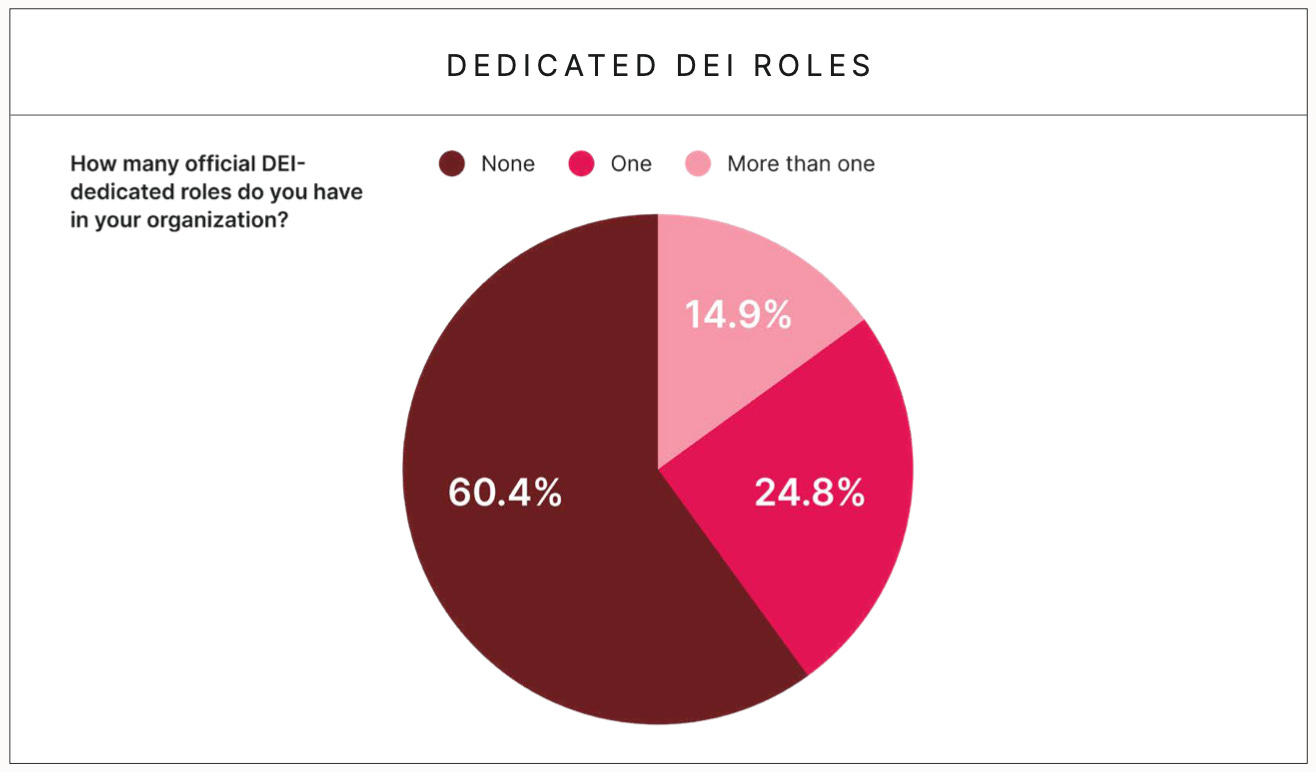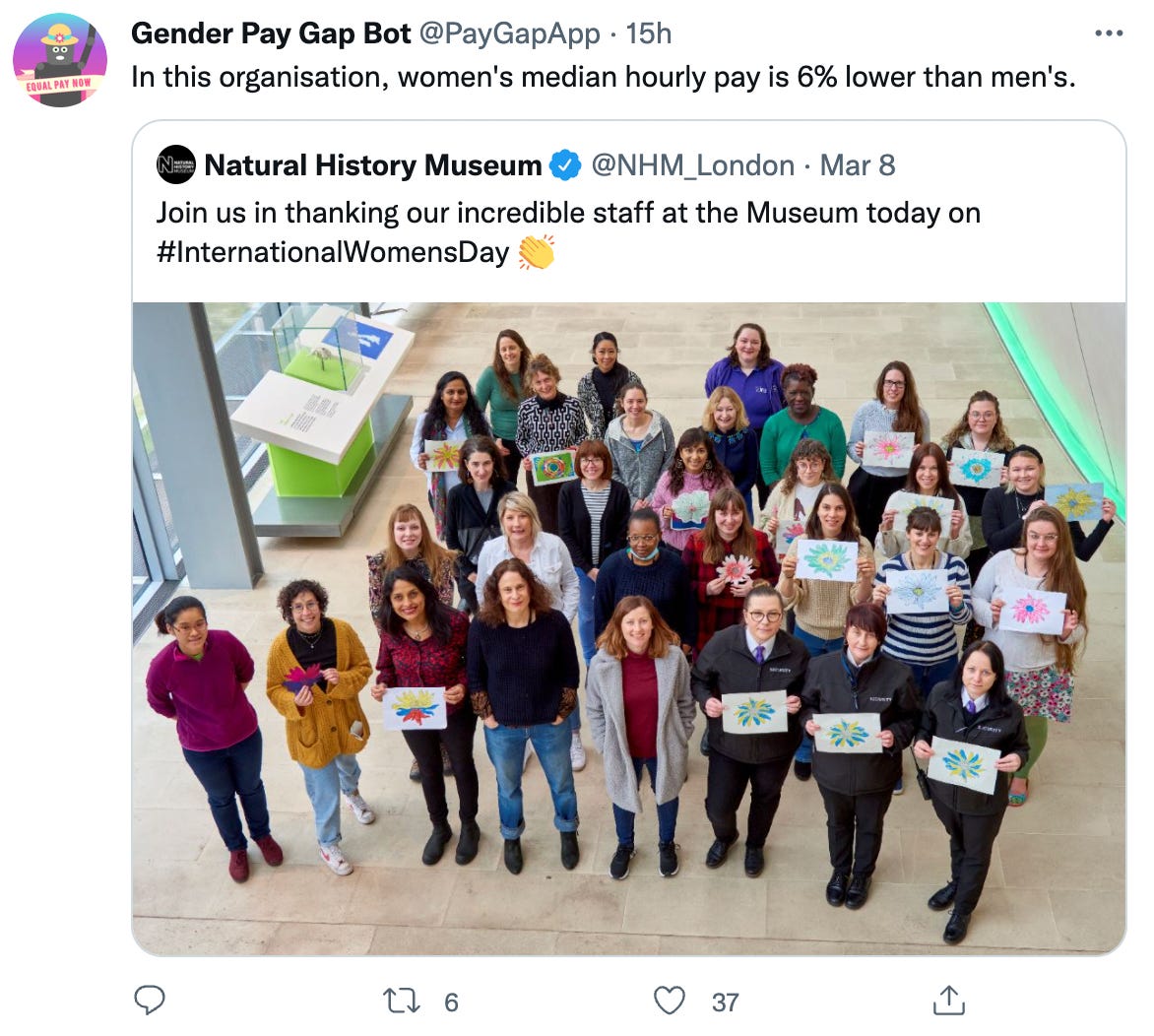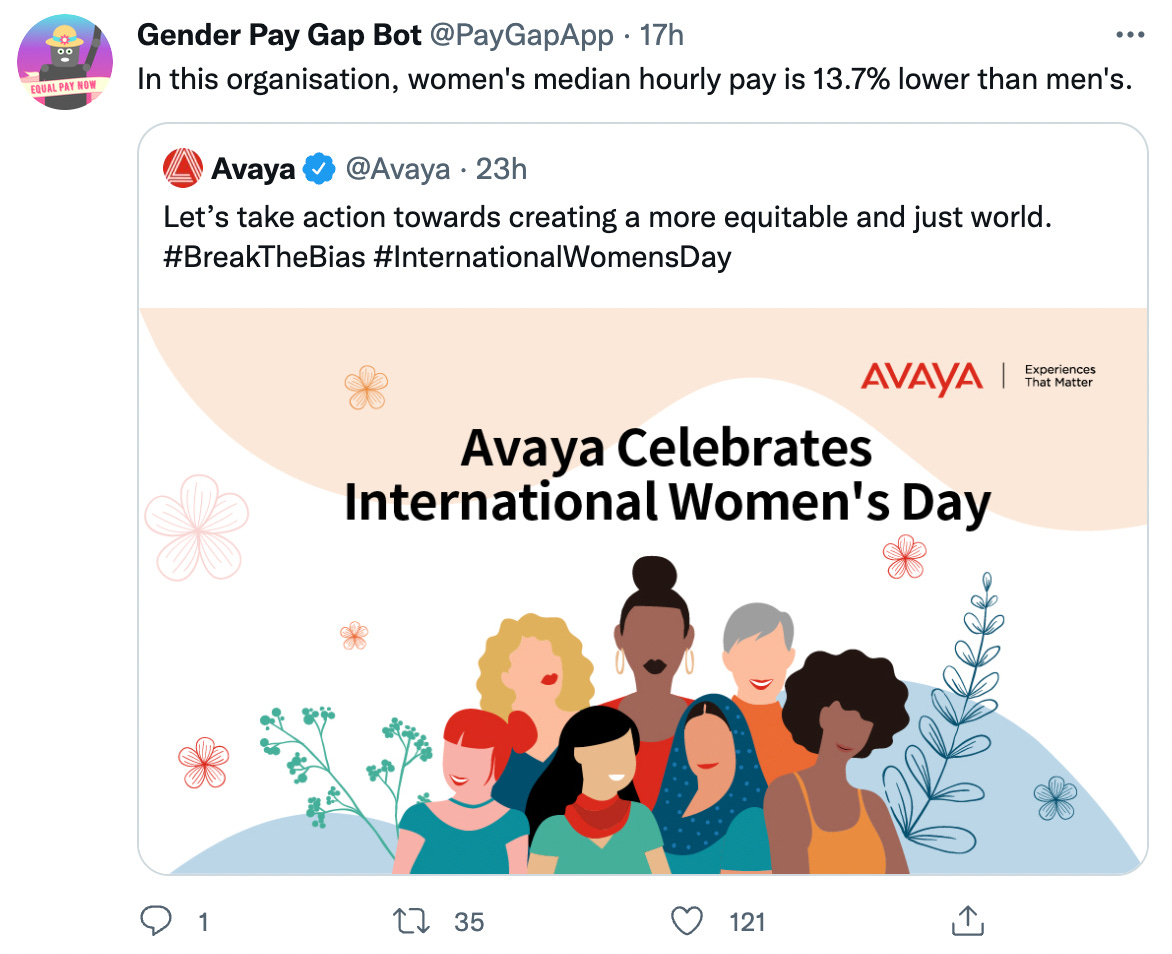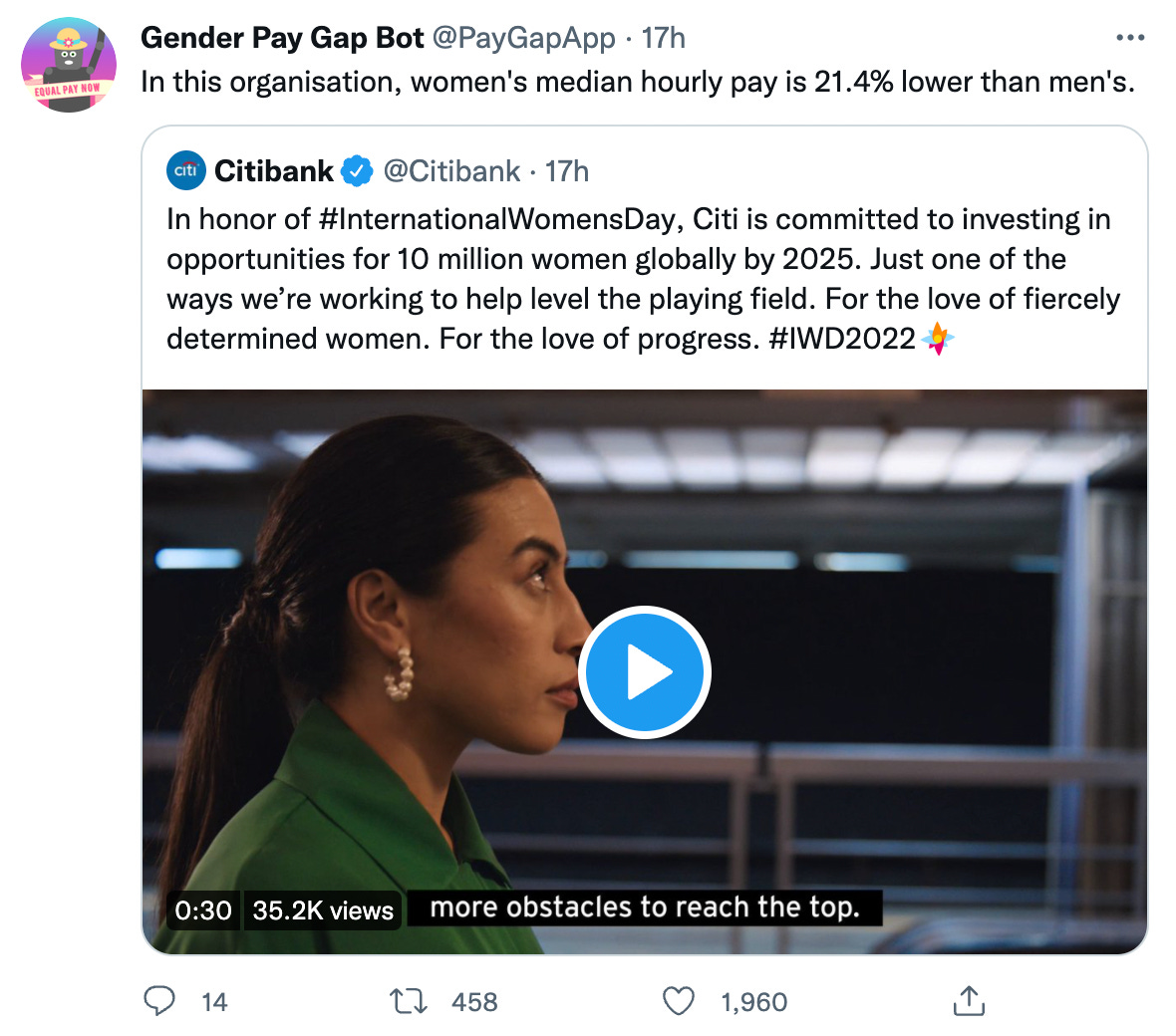Okay, confession:
I have a mild obsession with anyone who holds the title Chief Diversity Officer, Chief Inclusion Officer, Head of Diversity & Inclusion… Whatever combination of DEI, D&I, DEIB, I’m a fan. I just think it’s super duper cool that you have one dedicated person whose sole job is to make sure people feel included and that their organization is representative of the wonderfully diverse world we live in.
Excuse me while I nerd out over here.
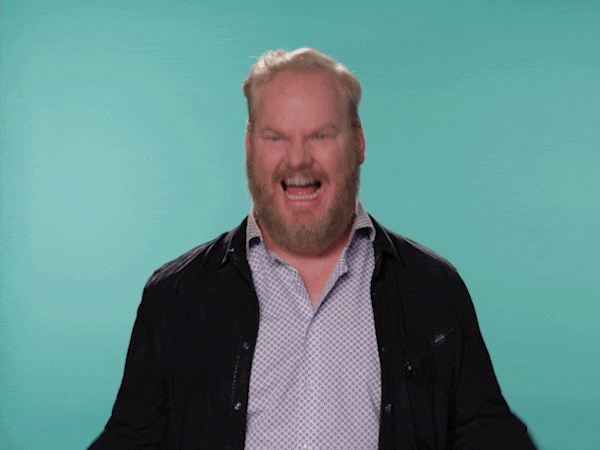
…And I’m back.
In my conversations with diversity, equity & inclusion (DEI) professionals, I’ve found that DEI work looks different across organizations. While some places have dedicated DEI roles (i.e. the Chief Diversity Officer and the Head of Diversity & Inclusion that I’m so crazy about), others place the responsibility of DEI on their existing HR teams.
According to Culture Amp’s 2022 Workplace DEI Report, which surveyed over 2,000 organizations, dedicated DEI roles are in the minority:
This Begs the Question: Who Should Be Responsible for DEI in an Organization?
Everyone?
Executives and managers?
DEI managers?
HR?
Individual employees?
According to a survey by recruiting software company Workable, here’s how nearly 800 business and HR professionals responded:
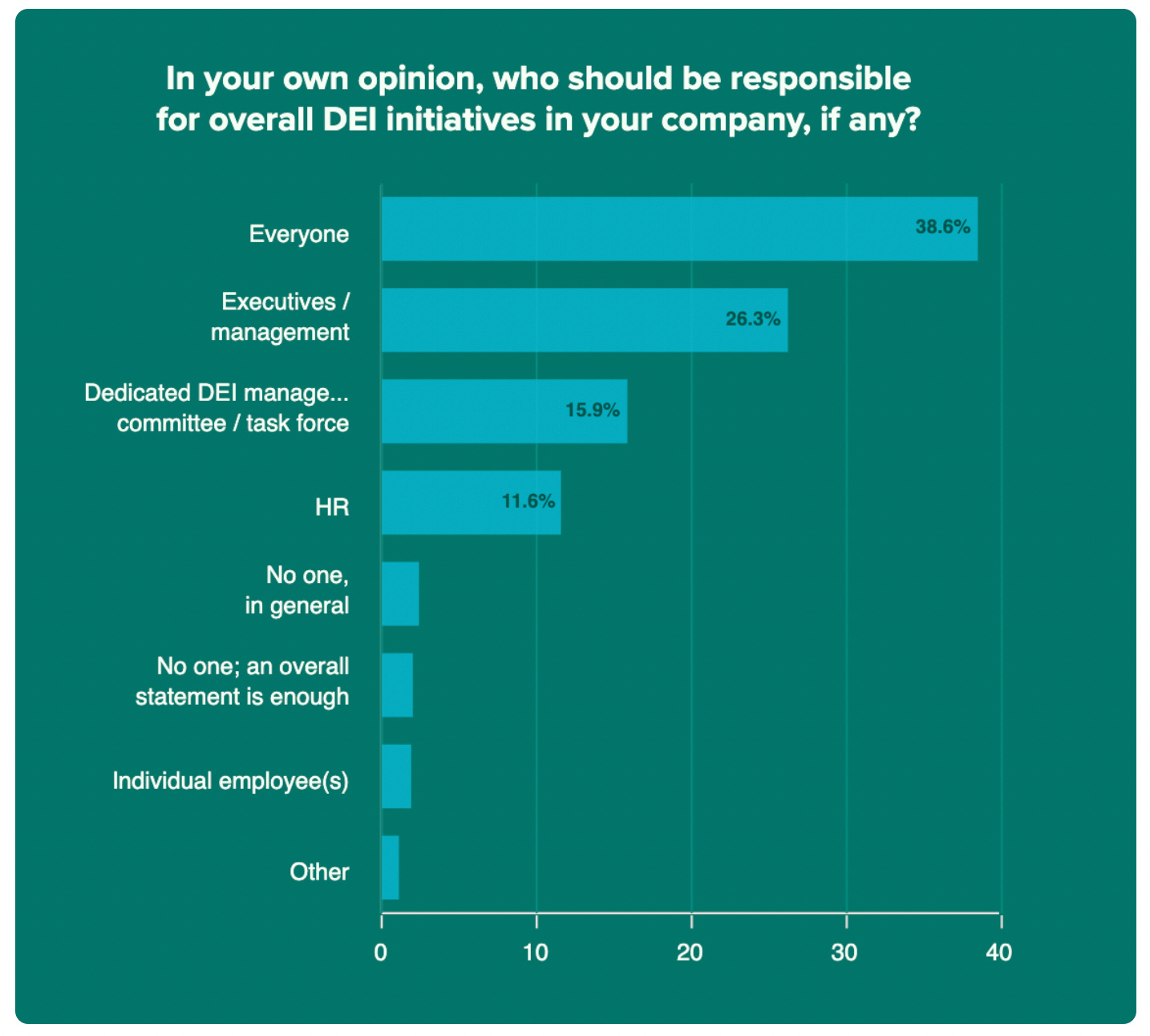
Take another look at the responses. Where would you place yourself?
Here’s my take:
In a perfect world: Everyone would be responsible for DEI.
In the real world: It will only work with a dedicated DEI manager, committee, or task force.
While I believe that DEI is everyone’s responsibility, it shouldn’t be everyone’s job.
In my opinion, if DEI is an important part of your organization’s culture and values, then you’re doing yourself a disservice if you don’t have someone whose sole responsibility – and mandate – is to increase diversity, equity, and inclusion.
The Dark Side of DEI (Spoiler Alert: It’s High Turnover)
According to an analysis done by leadership advisory firm Russell Reynolds, only 52% of S&P 500 companies today have a Chief Diversity Officer (CDO).
Their research also shows that the average tenure of a CDO in 2021 was under two years (compared to more than three years in 2018). In some of these cases, the CDO moved into a different executive role (e.g. Chief Human Resources Officer, Chief Sustainability Officer, or even Chief Executive Officer).
However, most CDOs left their roles and organizations completely. One of the key drivers of this high turnover is – you guessed it – burnout.
What causes burnout in CDOs?
Unrealistic and unaligned expectations, which end up pulling the CDO in too many different directions at once.
Disconnection between DEI mandates, organizational culture, and business objectives.
Emotional fatigue.
An “easy” win is to more clearly define the CDO role. Russell Reynolds also suggests:
The CDO’s mandate and priorities should be clearly connected to business issues and goals. “We often hear that a CDO should be a ‘champion of the D&I initiative,’ resulting in more of a cheerleader impression than a strategic business leader,” said Sally Saba, Chief Diversity Officer for Medtronic. Instead, CDOs need to “be seen more as business strategists; true business partners and trusted leadership coaches. And D&I must be a business strategy, rather than a program or initiative.”
But Yes, DEI is Everyone’s Responsibility
I think it’s safe to say that 2020 marked a pivotal moment in the DEI world. With a global pandemic and the murder of George Floyd, we suddenly saw words like “antiracism,” “white privilege,” and “systemic racism” entering the corporate vocabulary. These events democratized DEI in a way that we probably didn’t expect pre-pandemic.
Ultimately, DEI is successful when you don’t need a dedicated DEI person “reminding everyone of the importance of DEI,” as Olivia Wong puts it.
By making DEI everyone’s job and implementing structural change to policies, practices, and procedures, DEI can become ingrained into how you operate.
If you’re an individual employee in an organization, try to build more awareness around how your behavior impacts others. Be conscious of your communication style. How are you contributing to building an inclusive (or not-so-inclusive) culture?
Awareness is the first step in behavior change – and we all have to do our part.
Take It Away 💃
DEI and the people in charge of driving it will only fail if they are not in a position to drive real change. Their roles need to be clearly defined so they do their best work – and avoid burning out.
It doesn’t matter if you’re a mid-level manager, the Head of DEI, a member of the leadership team, or an individual employee. We must all reflect on what we can do to help build an inclusive culture where everyone feels valued, respected, and fulfilled. Here are a few questions to get you started:
What does inclusion mean to you? What does it look like?
Think of a time when you felt excluded/included. How did you feel? How did it impact you?
Think about a situation at work that didn’t feel very inclusive (toward you or anyone else). What made it feel that way? What could you have done differently to make it more inclusive?
The ultimate goal of DEI is to embed its practices and procedures into every role within the organization. That’s the only way to make long-lasting change.
DEI Win of the Week 🤖
This week, on Tuesday, March 8th, marked the 2022 edition of International Women’s Day.
I’m all for celebrating women – but the global gender gap is not expected to close for another 136 years! So, we’ve got to get a move on.
That’s why this week’s win is going to the Gender Pay Gap Bot, a Twitter bot that went viral for calling out the gender pay gap at various companies.
Every time a company (in the UK) tweeted positive statements celebrating International Women’s Day, the Gender Pay Gap Bot clapped back, retweeting the company’s gender pay gap.
Here are some examples:
I’m all for some sass, especially if it’s for a good cause.
Here’s to the next 136 years 🥂



